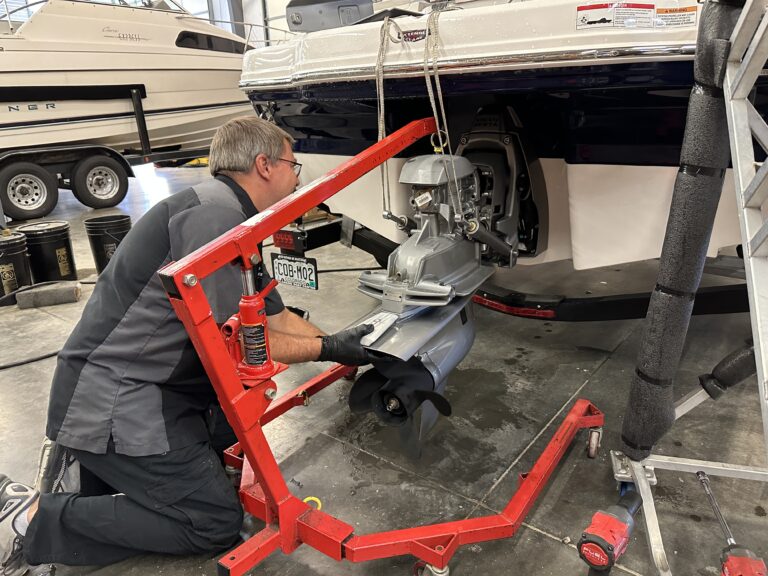OUTBOARD
Outboard engines are mounted on the transom of the boat. The steering of outboards can be controlled by a hand tiller or a steering wheel, which moves the entire engine when steering is adjusted.
In the past, outboards were typically two-stroke engines, but manufacturers have since switched to four-stroke engines. Two-stroke engines require oil to be mixed with gasoline to lubricate the engine and four-stroke engines require the oil and gasoline to be separate. Four-stroke engines, in addition to running quieter and smoother, are more environmentally friendly as the exhaust they emit is virtually smokeless compared to two-strokes.
INBOARD
Inboard engines are typically four-stroke automotive engines that are modified for use on the water. An inboard engine is mounted inside the hull of the boat and powers the driveshaft, through the boat bottom, which is connected to a propeller. Steering is controlled by a rudder, positioned either directly behind or to the side of the propeller.
STERN DRIVES
Sterndrives are sometimes called inboard/outboards (I/O) because they have features found on both inboard and outboard engines. Similar to inboards, sterndrives use four-stroke automotive engines that are modified for use on the water. Sterndrive engines are mounted inside the boat through the transom, and power the drive train, which is connected to the propeller. Similar to outboards, the sterndrive moves when the steering wheel is adjusted.





